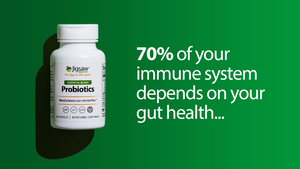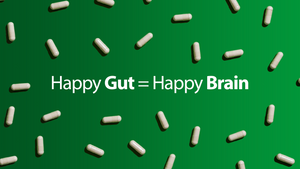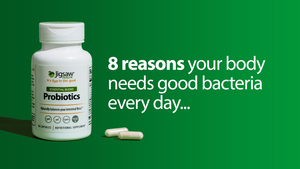OK, but I still want to eat the right food too.
Of course! Dr. Dean recommends the following for getting the maximum amount of magnesium from your diet:
- Eat a wide variety of vegetables daily. Always include greens such as kale, collards, spinach, and curly-leaf lettuce, and magnesium-rich herbs such as dandelion, chickweed, and nettles. (Cilantro and purslane also have high amounts.)
- Enjoy starchy vegetables 3 or 4 times a week, such as red-skinned potatoes, winter squash, corn on the cob, lima beans, and burdock root.
- Eat fruits moderately.
- Include a variety of whole grains: buckwheat, millet, rye, oats, amaranth, and quinoa.
- Fish, shellfish, organic chicken, meat, turkey, or free-range eggs can be eaten once a day as rich animal protein sources.
- Have beans, tempeh, nuts, seeds, and legumes as a vegetarian source of protein daily.
- Use fresh and dry herbs in your cooking and include lots of garlic.
- Use organic cold-pressed oils for your cooking: extra-virgin olive oil, coconut oil, and sesame oil.
- Use organic butter in moderation.
- Take 1-2 tbsp of flaxseed oil daily.
- Use whole-grain breads and pasta.
- For sweetener use stevia.
- Drink natural spring, distilled, or filtered water only. [The more magnesium-rich, the better!]
- Enjoy organic herbal teas.
- Eat sea vegetables: dulse, nori, arame, wakame, kombu, and hijiki. All are exceedingly high in magnesium.
- Use natural raw, unheated nuts, seeds, and nut and seed butters, rich magnesium sources.
- Use a high-quality, mineral-rich sea salt.
Foods to Avoid (Read Labels Thoroughly):
- All refined and processed foods of any kind, such as cookies, doughnuts, bagels, white bread, luncheon meats, and soy protein powder.
- All refined and processed sugars, including fructose or corn syrup and diet products with artificial sweeteners such as aspartame (NutraSweet and Splenda).
- All dairy products except organic butter and free-range eggs.
- Regular and decaffeinated coffee and black tea.
- Any foods containing hydrogenated or partially hydrogenated oils or trans fatty acids.
- All alcoholic beverages.
- Pasteurized fruit juices and sodas.
- Foods containing MSG, hydrolyzed vegetable protein, and chemical preservatives.
- Commercial iodized salt.
A Magnesium Eating Plan:
(From Dr. Deans book, The Magnesium Miracle)
Upon Rising: Juice of 1/2 - 1 fresh lemon in warm water. Sweeten with stevia.
Breakfast:
- Crockpot cereal with flaxseed oil and fresh or frozen blueberries, strawberries, raspberries, banana, peach, or pear.
- Choose two grains, one nut, one seed from: buckwheat, millet, rye, oats, amaranth, quinoa, sunflower seeds, pumpkin seeds, almonds, cashews, filberts, walnuts, pecans.
- For one person, put 2 oz of dry mixture in 5 oz of water in a 1-quart Crockpot. Cook overnight. In the morning place in a bowl, add 2-4 oz fruit, mix, and add 2 tbsp of flaxseed oil or 1 tbsp of organic butter, or 2 tbsp of ground flaxseeds (ground fresh in a coffee grinder). You may add rice milk, almond milk, or small amounts of soy milk as needed. For extra magnesium, sprinkle on wheat germ (kept in the freezer).
Substitutions:
- Instead of using a Crockpot, you can soak 2 ox of grain mixture overnight in 5 oz. of water, with or without 2 tbsp of plain yogurt. In the morning bring to a boil and let simmer on the lowest setting for 20 minutes. You may have to add more water to avoid dryness. Serve with 2 tbsp ground flaxseeds (ground fresh in a coffee grinder).
- Instead of soaking overnight, cook 2 oz of grain mixture in 6 oz of water. Bring to a boil and let simmer for 30 min.
Lunch [Choose one]:
- Brown rice and vegetables. Cooked with 2 oz dulse or other sea vegetables.
- Leafy green salad, soup with added sea vegetables, and Essene sprouted bread or Ezekiel bread.
- Fish, greens (collards, spinach, swiss chard), and salad.
- Egg omelet with sautéed vegetables.
- Chicken with vegetables.
Dinner [Choose one]:
- Soup (with sea vegetables) and salad.
- Stir-fried grains (leftover grains from breakfast) and vegetables.
- Roasted vegetables with wild rice.
- Salad with cooked organic legumes (kidney beans, lentils, black beans, chickpeas).
- Wheat-free pasta (rice, spelt, kamut) with pesto, tomato sauce, and green vegetables.
- Mixed salad with avocado.
Snacks:
- Raw vegetables.
- Dried fruit (prunes and figs).
- Shelled nuts and seeds (raw, not processed or salted).
- Backed blue corn chips.
- Popcorn.
Drinks:
- Pure, clean water that is high in magnesium and low in calcium.
- Green tea.
- Freshly squeezed lemon juice in water.
- Cranberry juice sweetened with stevia.
- Herbal teas.
- Kukicha (roasted twig tea).1
Like Dr. Dean says though...
Getting enough magnesium from your food alone (even on the most magnesium-rich diet) is nearly impossible. She encourages everyone to take a highly absorbable magnesium supplement in order to give your body what it needs for optimal health.2
Jigsaw Healths Magnesium w/SRT
Dr. Dean recommends Jigsaw Magnesium w/ SRT because it is a premier quality magnesium supplement that is formulated for maximum absorption and potency as dimagnesium malate.3
And unlike most other magnesium supplements, Jigsaw Magnesium w/ SRT avoids diarrhea because of it's sustained release technology.
Learn more about the many benefits of Jigsaw Magnesium w/SRT.
Return to "Magnesium-Rich Food: Is it a Contradiction in Terms?" article.
Cited Sources


















